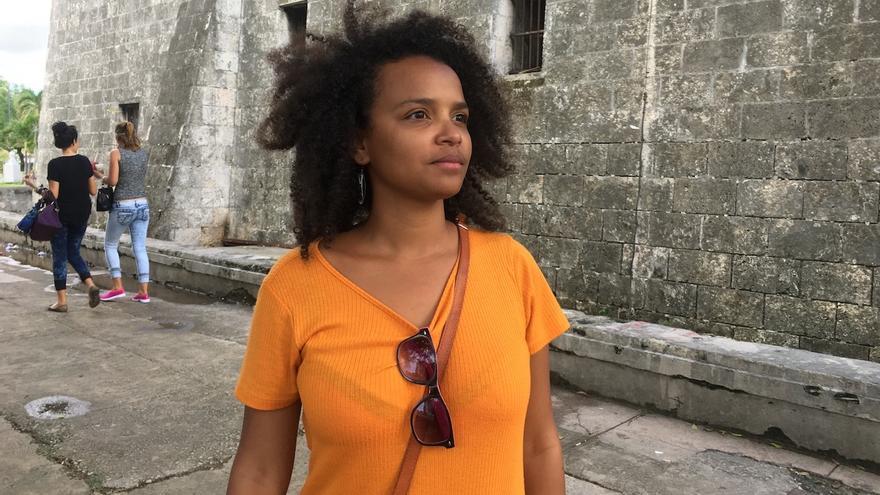
![]() 14ymedio, Havana, December 27, 2018 — A graduate in Art History in 2012, Yanelys Núñez Leyva (b. Havana, 1989) has this year been one of the most visible faces on the independent art scene of the Island.
14ymedio, Havana, December 27, 2018 — A graduate in Art History in 2012, Yanelys Núñez Leyva (b. Havana, 1989) has this year been one of the most visible faces on the independent art scene of the Island.
Along with Luis Manuel Otero Alcántara and another group of artists she defied the country’s cultural authorities by inaugurating the #008Biennial of Havana. Núñez was one of the principle curators and organizers of the independent event that took place at the headquarters of the Museum of Dissidence, a project for which she was expelled from her position at the magazine Revolución y Cultura.
Through the Museum of Dissidence, Núñez sought to define via art the term ‘dissident’, also leaning on the meaning that the Royal Spanish Academy grants the word. In the same place, the curator mixed personalities from the history of Cuba, in the style of Hatuey, José Martí, and Oswaldo Payá. The project, which initially functioned in a digital format via a webpage, materialized between the walls of a house at 955 Calle Damas, Old Havana.
The place has also served as a headquarters for the festival Endless Poetry, the presentation of Enrique Del Risco’s book, El compañero que me atiende, and even a reading of censored authors, which was scheduled to happen in parallel with the Book Festival and was boycotted by State Security.
Since Decree 349, which regulates artistic dissemination, was published on July 10 in the Gaceta Oficial, Núñez has been an active part of the San Isidro group, which took a stand against the Government to ask for its repeal. The Decree lists up to 19 violations of the law, many of which directly affect the independent scene, like organizing cultural events without the Government’s authorization or disseminating contents that are “violent, pornographic, discriminatory, or offensive toward national symbols.”
The campaign against the law used texts and artistic actions to condemn its exclusionary character and reported that it had been written without previously consulting artists. Núñez headed a protest against the controversial text in front of the Capitol of Havana, covering her body with human excrement while she demanded respect for free art.
Although the decree was meant to go into effect on December 7, part of its contents has been suspended while a dialogue process has been opened up with pro-government institutions like the National Union of Writers and Artists (Uneac) and the Saíz Brothers Association (AHS) in which the writing of some complementary laws for its future implementation is being discussed.
The organization Amnesty International as well as the State Department of the United States have declared themselves against Decree 349, believing that it contravenes the right to liberty of expression and could be used to censor content.
See also: 14ymedio Faces of 2018
Translated by: Sheilagh Carey
_____________________
The 14ymedio team is committed to serious journalism that reflects the reality of deep Cuba. Thank you for joining us on this long road. We invite you to continue supporting us, but this time by becoming a member of 14ymedio. Together we can continue to transform journalism in Cuba.
